OLD COLT: WE PROVIDE THE PUBLIC WITH AN ONLINE EDUCATIONAL RESOURCE FOR OLD COLT GUNS.
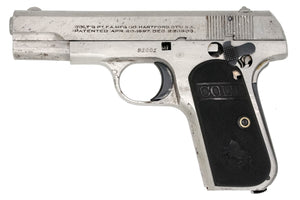
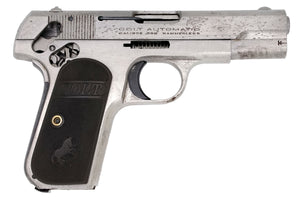
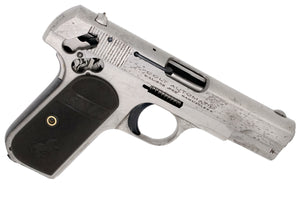
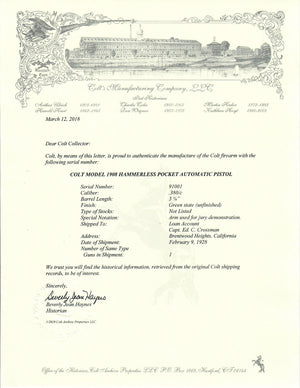
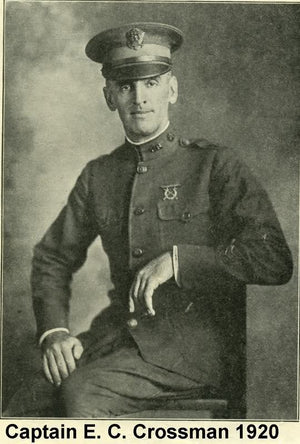
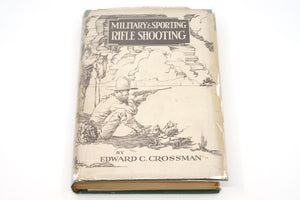
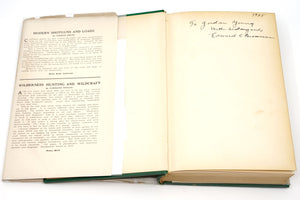
This rare Colt .380 Cut Away referred to in the Colt records as a special skeletonized, was shipped Green (raw milled steel without finish) to Captain Edward C. Crossman on Loan from the factory, February 9th, 1928. It was returned on April 26th, 1928, and although there is no record of it leaving the factory again, it eventually found it's way into the Crossman estate.
Captain Edward Carthart "Ned" Crossman (1889 - 1939) was a very prominent writer of his period and was able to make a living full time writing for magazines and publishing books.
He was a regular contributor to "Arms and the Man" and it's successor "American Rifleman". He also wrote some books of his own, some of the more well known tiles are "Military & Sporting Rifle Shooting", "Small Bore Rifle Shooting" and "The Book of Springfield".
Ned was born in Iowa and grew up at an early age learning to use firearms for gathering food, providing protection and recreation. Eventually he would make a name for himself by becoming a member of the Muscatine Guards-Company-C of the 9th Regiment of the Iowa National Guard.
Ned eventually moved to California where he came into public notice at the age of 23. His contribution to the Arms and the Man was published. The "Arms and the Man" would eventually become what was the National Rifle Association's "American Rifleman". His knowledge of firearms and the outdoors wise wide but also deep which allowed him to write a wide range of articles for a variety of different magazines.
He was very active in the establishment of the Los Angeles Rifle and Revolver club and served as secretary for many years. While in LA he ended up meeting his wife Blanche Brown and they had their only child on July 8th, 1909. The family would often go together to explore the back country of the west ranging from New Mexico to Oregon in pursuit of game, adventure and writing material.
On April 6th, 1917 General Peyton March, Chief of Staff of the Army signed orders creating "The Small Arms Firing School of Instruction of Officers and Enlisted Men in Rifle and Pistol Shooting" with Lt. Col. Morton Mumma as commandant. In recognition of his skill and knowledge as a marksman Crossman was ordered to active duty as a captain where he would join the great small-bore rifleman T.K. "Tackhole" Lee, long range specialists the like of William Leusher and James Keogh and a host of others at Camp Perry, Ohio.
After the war, Crossman stayed in the Army while still writing articles for the popular outdoor press. In 1919 he was sent to Daytona Beach, Florida to serve under Lieutenant Colonel Glenn P. Wilhelm in checking the range tables of the 30 Caliber M1 cartridge and determining it's true maximum range.
Crossman had been mustered out of the Army soon after his tour at Daytona when it was discovered that he had developed stomach ulcers, but his attachment to his days in the service were so strong that he would often use the honorific of ‘captain’ in the ensuing years. He branched off into a relatively new field of firearms forensics. He soon became associated with the Bureau of Forensic Ballistics, eventually dealing with over 200 cases. When his son Jim graduated from California Institute of Technology in 1931 he joined his father in his practice.
On the 18th of October in 1938 Ned was driving home through a blinding dust storm. In the limited visibility their auto was broadsided by a truck near Indio and Ned, unhurt, was horrified to see that Blanche had suffered a broken neck. She passed three days later. Ned was disconsolate and blamed himself for his wife’s death. He slipped into depression. Three months after the accident Ned closed the doors of the garage at his 142 South Rockingham Road home, slid behind the wheel of his car, shifted into neutral, set the brake, turned on the ignition, and calmly sat back awaiting the inevitable.